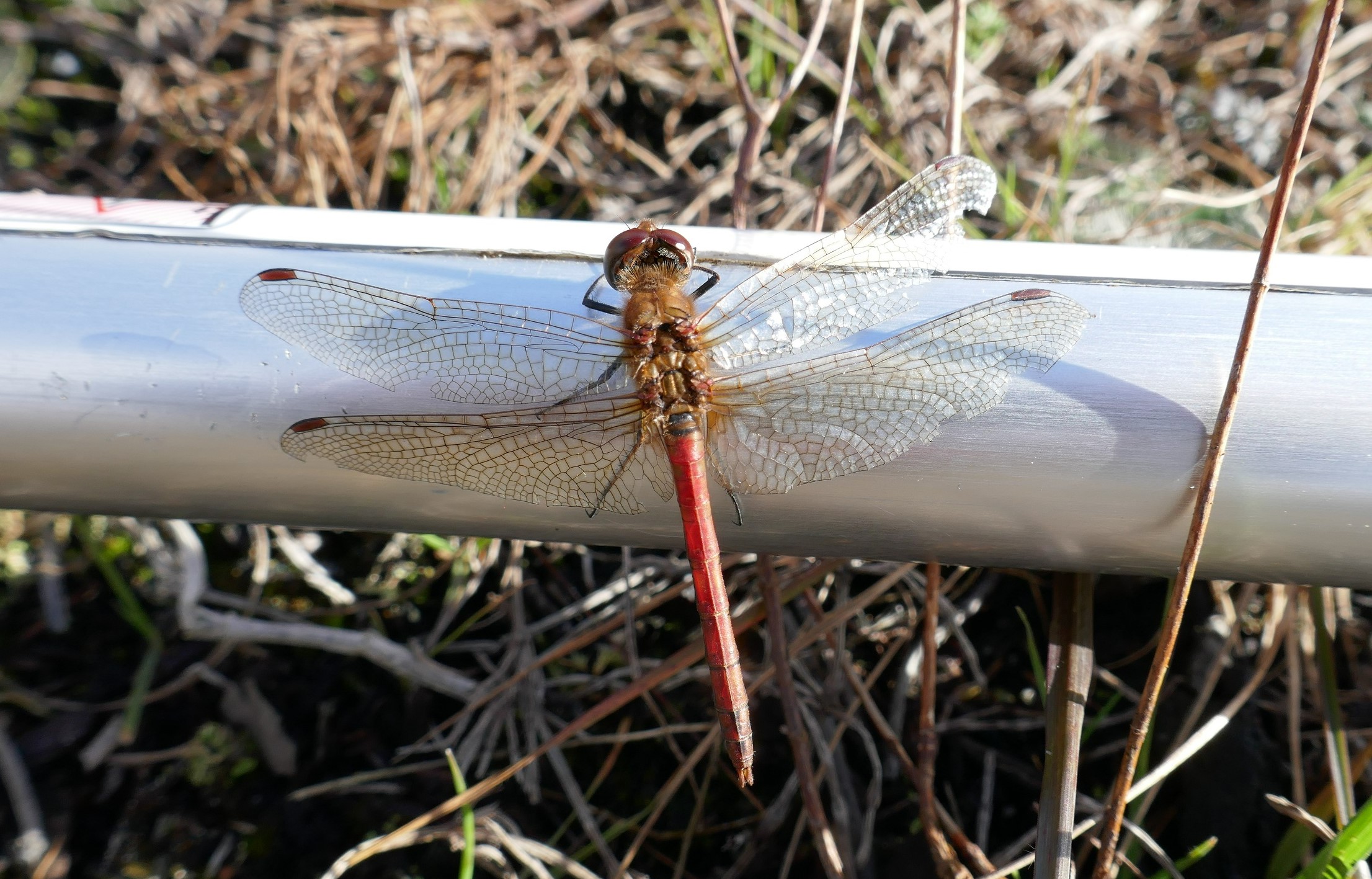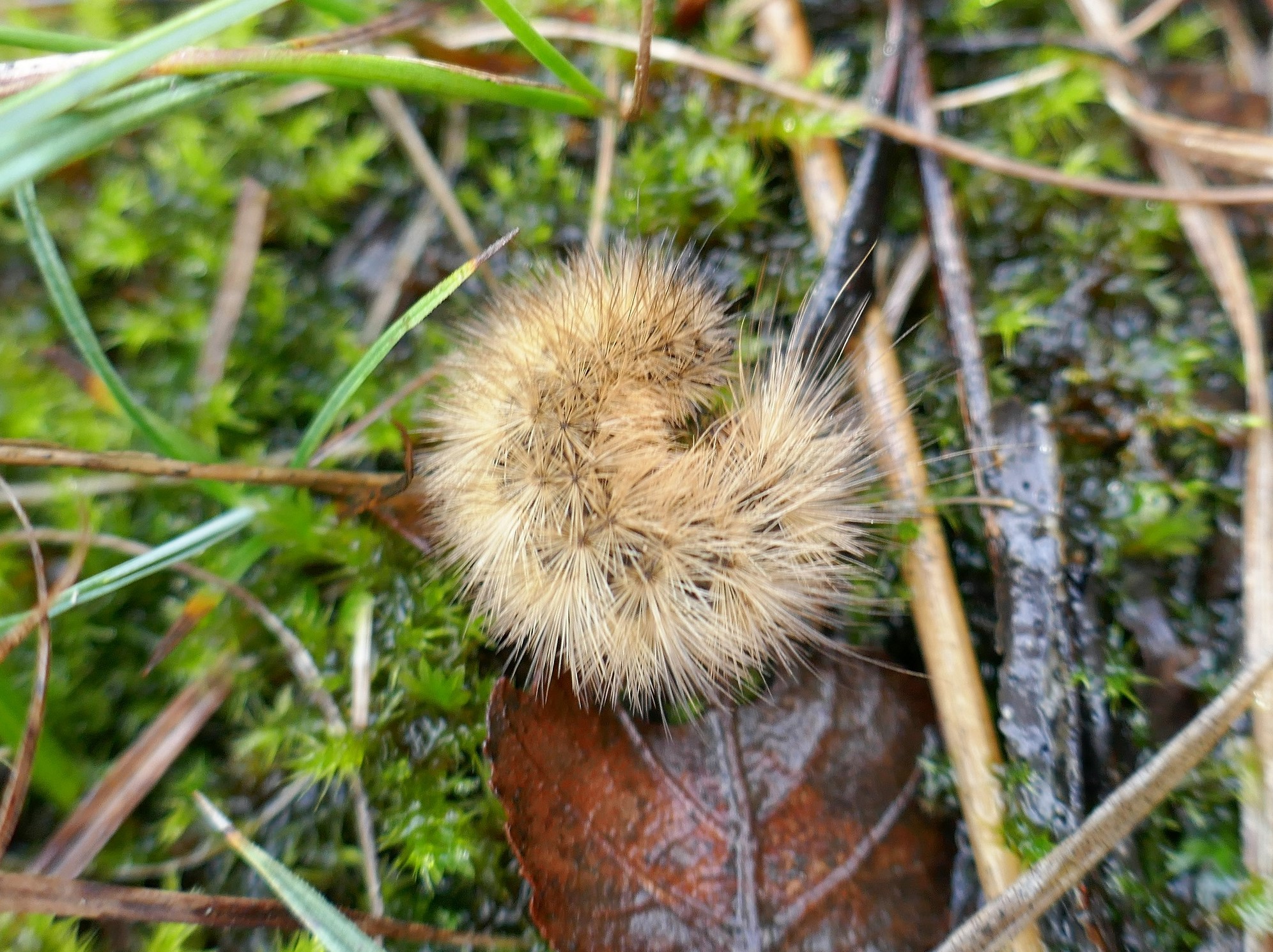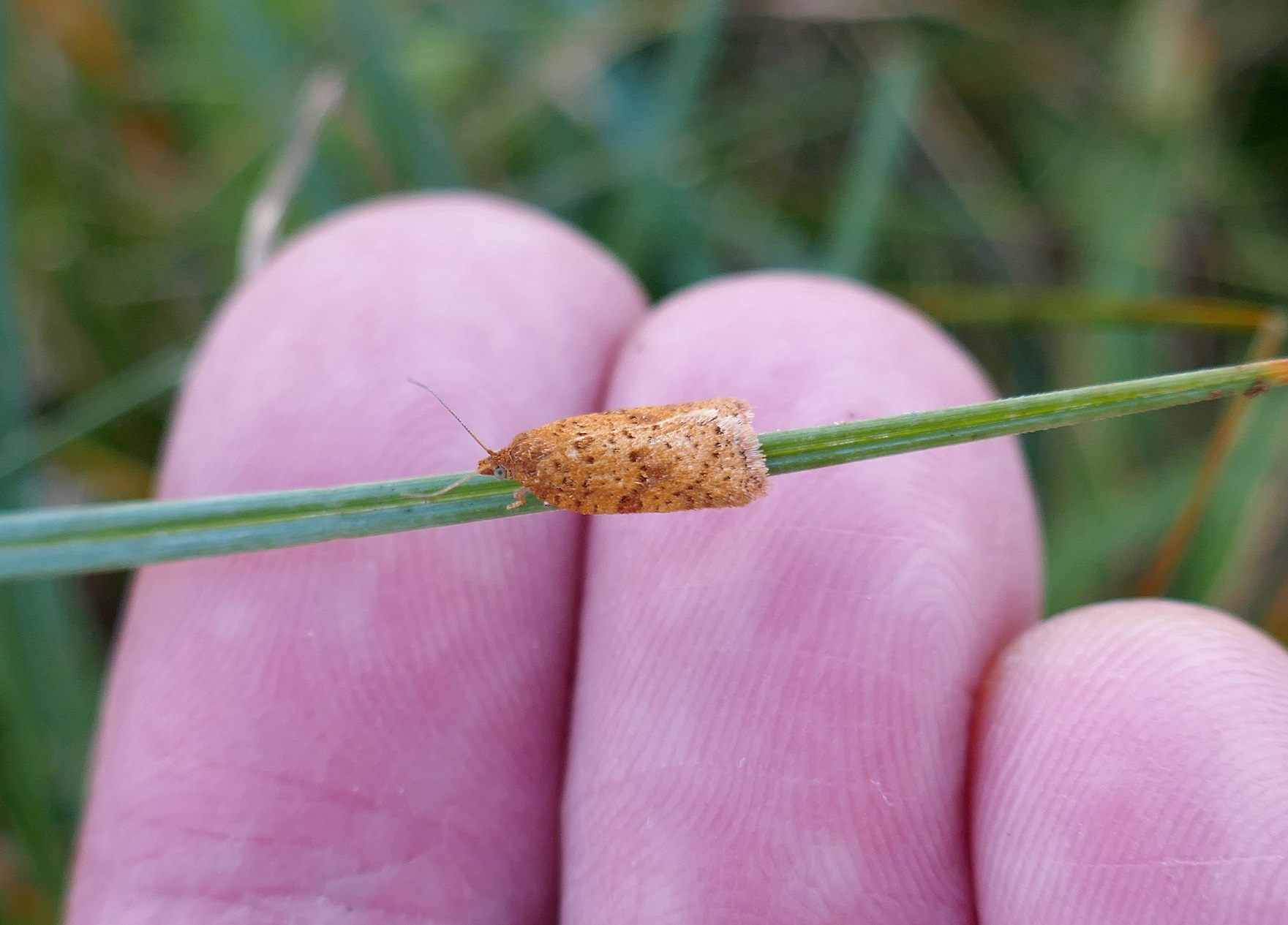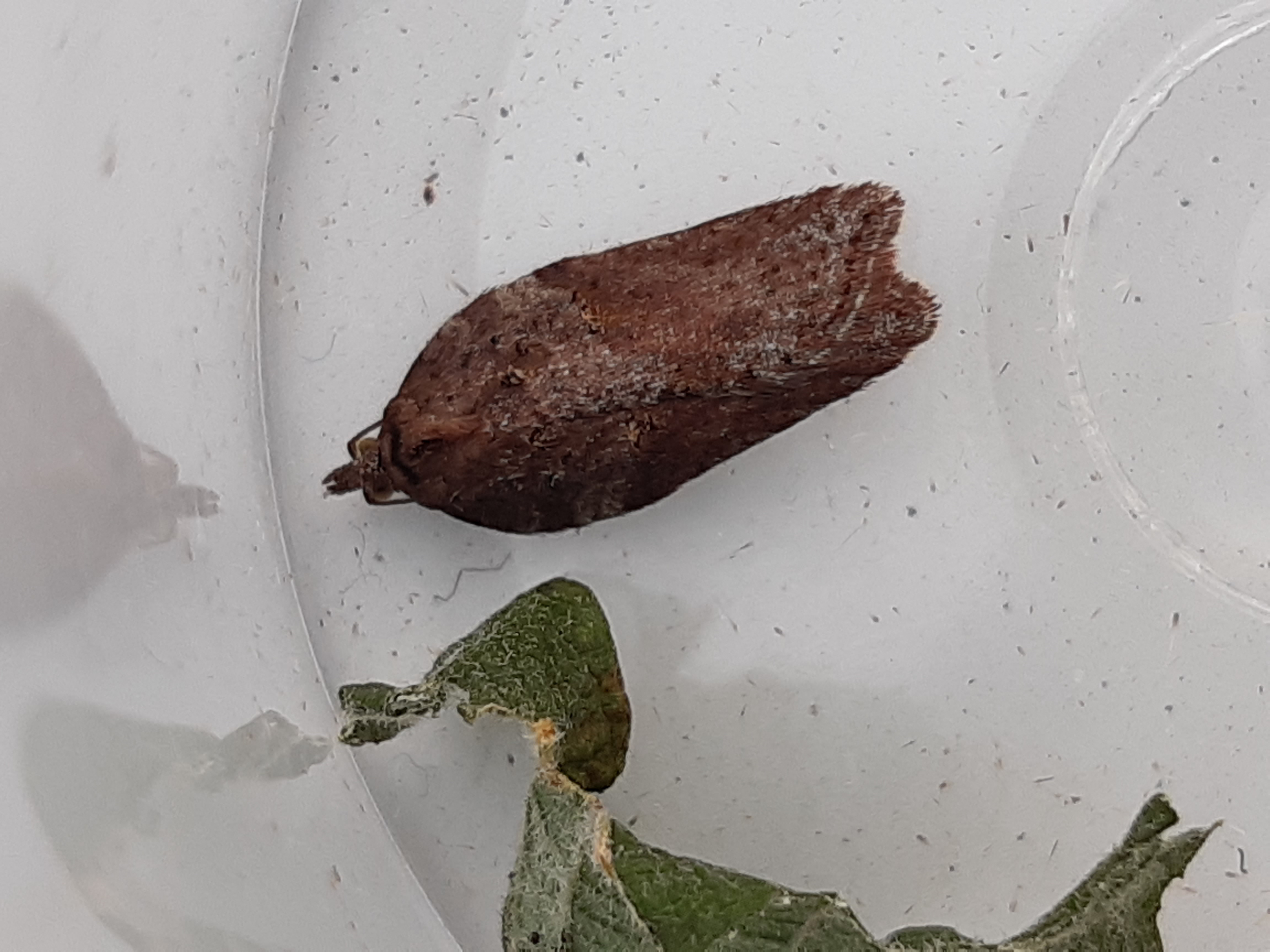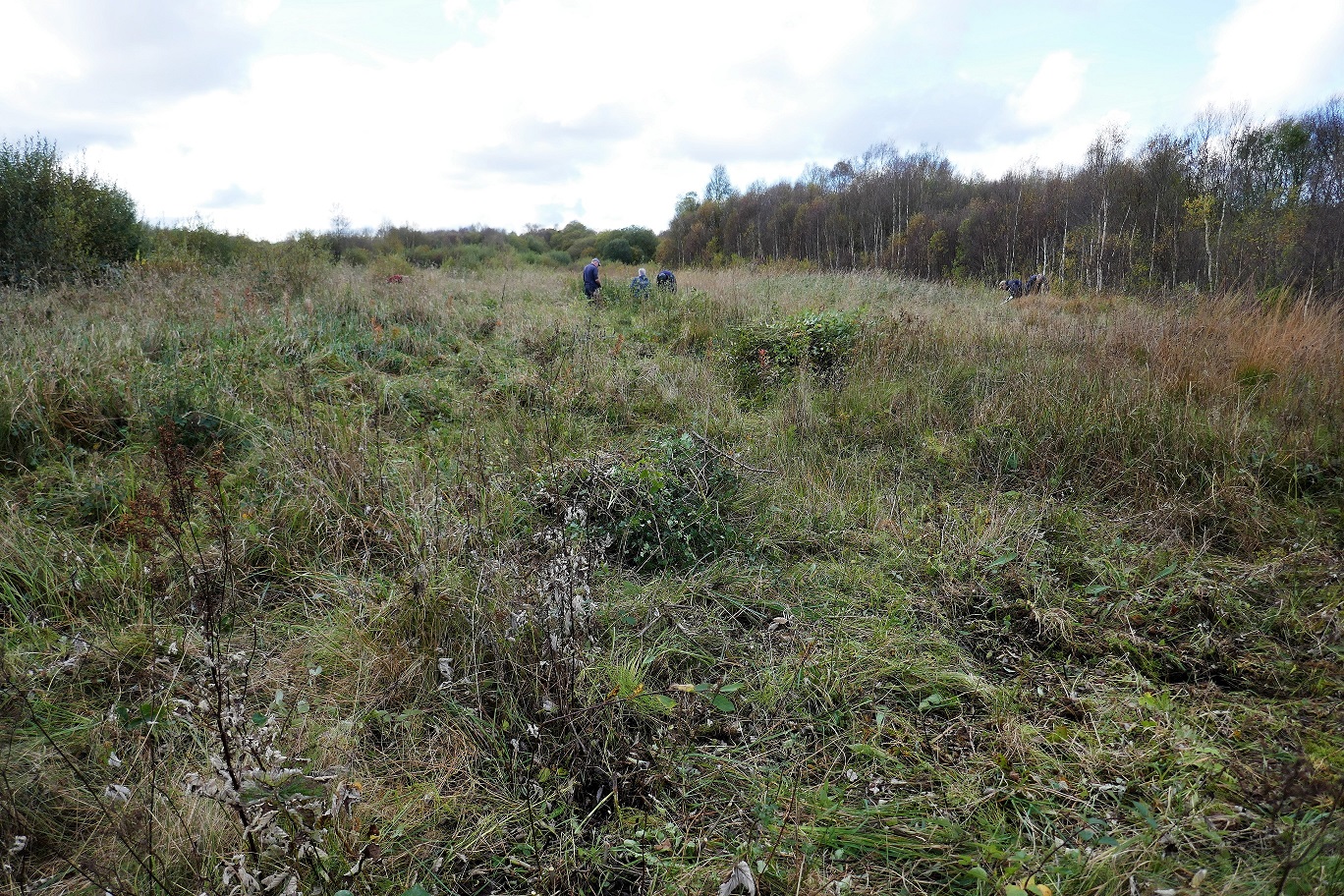The days immediately before October 30th saw heavy rain but the appointed day was bright, sunny, dry, and even warm.
Our enthusiasm brightened by the conditions, we tacked willow re-growth and birch saplings on the southern side of BCI’s reserve at Lullybeg. This herb-rich area contains Common Dog-violet, Common Milkwort, Common Valerian, Devil’s-bit Scabious, Cuckoo-flower, Common Bird’s-foot-trefoil, Tormentil, vetches, and a range of grasses, all important features for moths and butterflies.
This area is used for breeding by two rare moths, Narrow-bordered Five-spot Burnet and Small Purple-barred, and a threatened butterfly, the Dark Green Fritillary. The main challenges to the habitat on Lullybeg Reserve are the growth of willow and birch which, if left untackled, will change the habitat from species-rich wet grassland to scrub and eventually woodland. While these habitats are important for other species, these habitats are very well represented on the site and in the general area.
Thanks to the wet peat soils and their shallow roots, the birch saplings were easy to uproot. The willow needed to be cut back and uprooted applying more force and all the plants were placed in piles and later moved into an area of dense scrub to leave the grassland clear.
We took a break for lunch and basked in the late autumn sun, which beamed warmly on us and our conversations. We managed to see a few late insects, including a late Small Tortoiseshell, a few micro-moths, including Acleris notana, a species that breeds on birch and hibernates as an adult moth. Three dragonflies, Black and Common Darter and Migrant Hawker were spotted, their gauzy wings gleaming in the sharp, shallow autumn light.
By the time we finished our work, a large amount of open grassland was achieved. We found some Common Dog-violet plants with mature leaves showing feeding damage, probably from Dark Green Fritillary caterpillars earlier in the year. Thanks to our work, the plants remain unshaded and available for the next generation which we hope to see flying next June.
A very special thanks to all who worked so hard to keep the habitat in the best condition for our reserve’s butterflies.
